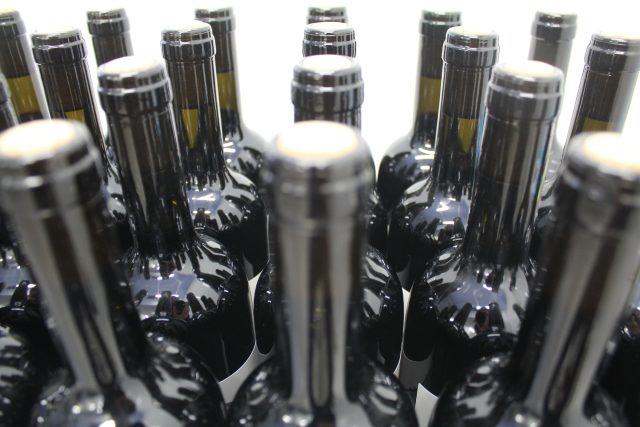This website uses cookies so that we can provide you with the best user experience possible. Cookie information is stored in your browser and performs functions such as recognising you when you return to our website and helping our team to understand which sections of the website you find most interesting and useful.
Consumer perception ‘largest barrier’ to lighter wine bottles
The “largest barrier” to the more widespread adoption of lighter wine bottles is consumer perception, according to Gilian Handelman, vice president of education at Jackson Family Wines.

Speaking at the IMW Symposium in Wiesbaden earlier this month, Handelman stressed that the issue with a move to lighter wine bottles wasn’t increased fragility or different aesthetics, but image.
Beginning a presentation on wine’s carbon footprint, she said, “What’s in the way of lightweighting? It is perception and consumer awareness – that continues to be largest barrier.”
Continuing, she remarked, “We have been telling consumers for decades that heavier and darker bottles are better, so we’ve got to do some reversal here.”
Turning her attention to packaging at Jackson Family Wines, she said that the company started the shift to lighter wine bottles in 2015, bring about a significant reduction on carbon emissions, but only a small impact on the appearance of its brands.
“Since 2015 we light-weighted 15 different wines from 8 different producers, which represents 68% of all our bottles produced,” she recorded, adding, “There was a lot of handwringing about how it would look, and it turns out that the difference in the aesthetic of the bottle is really marginal.”
As for the impact on emissions, she told the 500 attendees at the symposium that Jackson Family Wines had reduced the amount of glass purchased by the group by 3,219 tons, bringing down emissions by 1,400 metric tons of CO2 (a drop of 9%, which had decreased the company’s overall CO2 emissions by 1.5%).
Speaking further about the impact, she said that bringing down the bottle weight by 56.69 grams on a wine such as Kendall Jackson Vintner’s Reserve Chardonnay was a major saving, considering more than two million cases are produced annually, while a drop of 53.86g on La Crema affected 500,000 cases of glass.
The cost savings have also been significant, with a 5% drop in bottle weight on the group’s four highest-volume bottle moulds bringing down the money spent on purchasing glass by US$1 million annually, while reducing the company’s outlay on fuel by $500,000 a year, according to Handelman.
In terms of weight, she said that an “ideal place” for reductions was the punt, asking, “Do we need it? A sommelier might say they need it, but the consumer doesn’t end up seeing it.”
She also said that Jackson Family Wines was planning on sticking with bottles, commenting, “We’ve tried everything, from cans to bag-in-box, but glass is still the choice for us.”
But she then said there was much room for making the wine bottle a greener option, mentioning opportunities such as “eliminating capsules”, “consolidating moulds and colours”, “improving the recycling stream”, developing “closed loop returnable bottle programmes,” and most importantly, she stated, “We need to decarbonise the glass manufacturing process”.
“The challenge we face is that many glass furnaces are fuelled by fossil fuels, and we have an issue, because they burn at a very high heat, and once they are turned on, they are not turned off until they are out of commission 15 years later,” she said.
One area of immediate improvement concerns the amount of recycled glass or cullet used in the furnaces, which she said was 50% for Jackson Family Wines, “and we hope to get up to 80%.”
As for a shift to fuelling furnaces with renewable energy sources, she said “We need investment by glass manufacturers to transfer to renewable electricity or hydrogen.”
This is happening, however, with Verallia installing an all-electric melting furnace at a Cognac glass manufacturing plant in France, while Encirc is working on a hydrogen-powered furnace in Cheshire, UK, that will begin glass production in 2027 for Diageo-owned spirits brands.
According to Encirc and Diageo, the new furnace promises to create ‘the world’s first net zero glass bottles at scale’ – producing up to 200 million bottles of Smirnoff, Captain Morgan, Gordon’s and Tanqueray per year by 2030.
Meanwhile, during a separate session on sustainable wine retailing at the same IMW Symposium, president of Grace Vineyards Judy Chan said that using lighter wine bottles was a particular challenge in China, both due to their lack of availability, and desirability.
“You can’t find lighter bottles in China, the bottles you find in China are heavy: that’s what the producer is buying because that’s what the market likes, and for us to import it [lighter bottles], price-wise it doesn’t make sense; we can’t afford it,” she said.
Jackson Family Wines: top 10 sources of emissions (2021)
- Glass bottles: 17.5%
- Purchased grapes: 10.5%
- Truck distribution: 8%
- Vineyard soil emissions: 7.4%
- Agricultural diesel: 5%
- Employee commute: 3.8%
- Gasoline: 4%
- Cardboard boxes: 4%
- Upstream fuel emssions: 3.6%
- Intermodal distribution: 4%
Read more
Why extraneous packaging matters for wine in China
Related news
A 'challenging yet surprising' vintage for Centre-Loire in 2024

